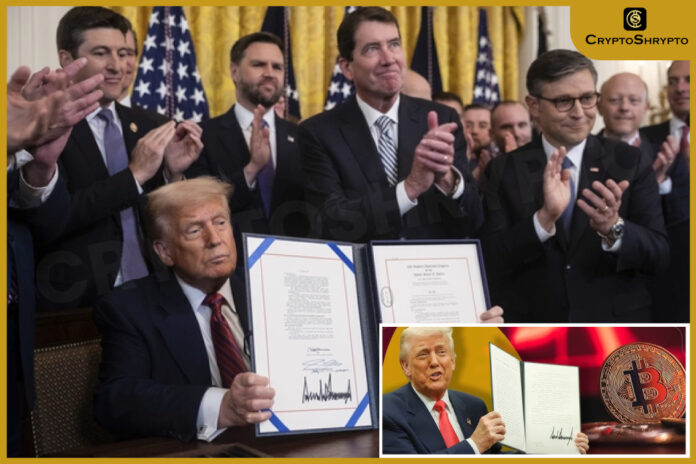U.S. President Donald Trump is seeking to expand investment options within workplace retirement plans, ordering federal regulators to explore changes that would allow Americans to use their 401(k) savings for alternative assets such as cryptocurrencies, private equity, real estate, and gold.
The directive, issued Thursday, instructs the Department of Labor to review rules that may discourage employers from offering non-traditional investment options in 401(k) plans. The agency has 180 days to propose potential regulatory changes.
Trump’s move aims to democratize access to asset classes that have traditionally been reserved for institutional investors and high-net-worth individuals, while unlocking new capital for industries like blockchain and private equity. “This is about giving everyday Americans the same financial tools the wealthy have long enjoyed,” a senior administration official said.
However, critics argue the shift could expose ordinary savers to increased risk. Unlike traditional pensions with guaranteed payouts, 401(k) plans depend heavily on market performance. Most employers currently steer clear of volatile or opaque investments like private equity and crypto due to high fees, limited liquidity, and fewer disclosure requirements.
Still, some major asset managers are preparing for the change. Industry giants such as Vanguard and State Street have already begun partnering with firms like Apollo Global and Blackstone to offer private-equity-focused retirement funds.
This policy builds on Trump-era efforts to modernize retirement investing. During his first term, the Labor Department encouraged private equity inclusion in retirement portfolios, but the initiative faced legal challenges and was rolled back under President Biden.
In May, the Trump administration reversed 2022 guidance that had advised extreme caution on crypto offerings in retirement accounts, signaling growing openness to digital assets as part of long-term financial planning.
While any rule change will take time, Trump’s latest order sets the stage for a significant reshaping of the retirement investment landscape—one that could bring crypto and other alternatives into millions of Americans’ savings plans.




